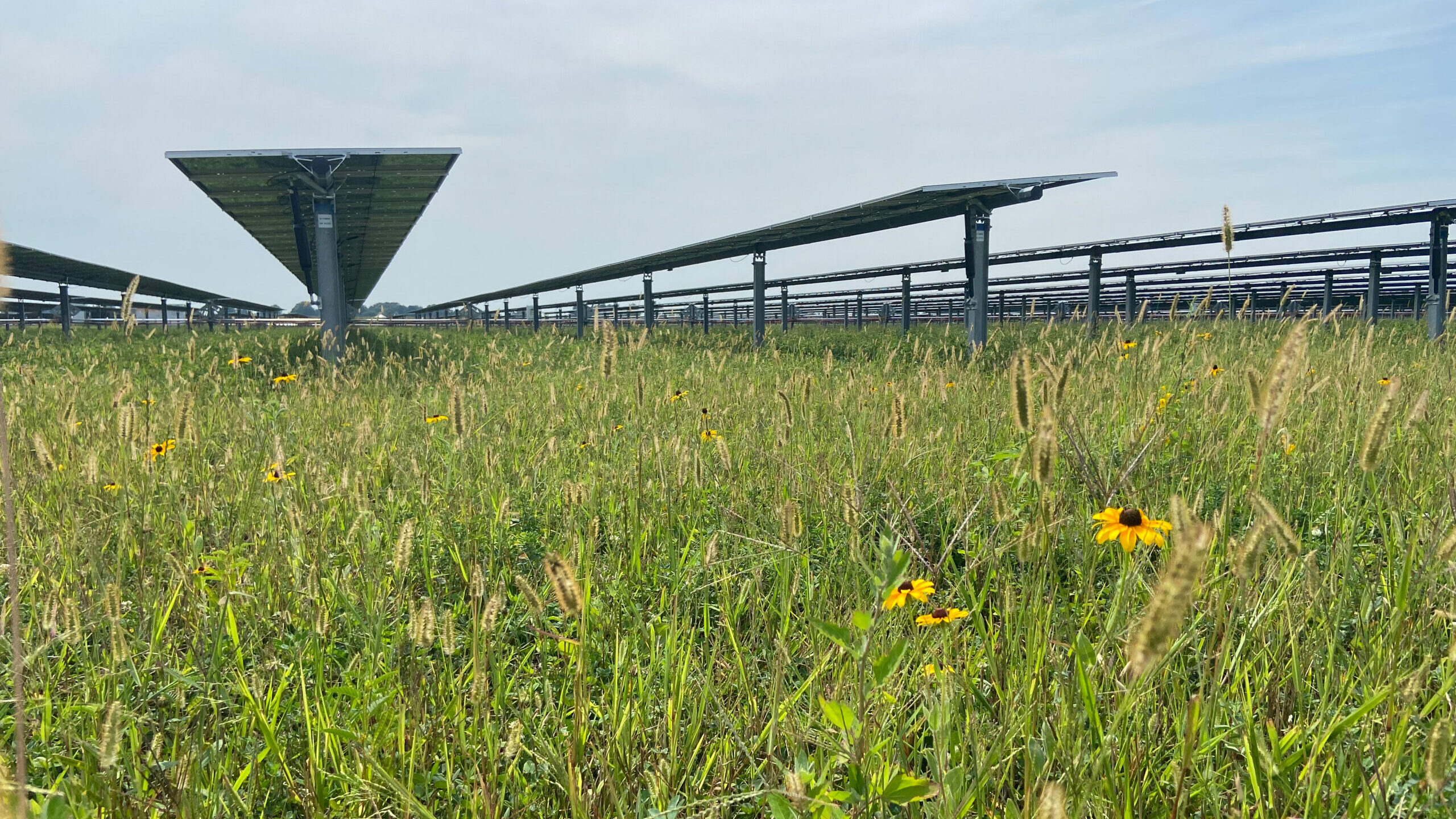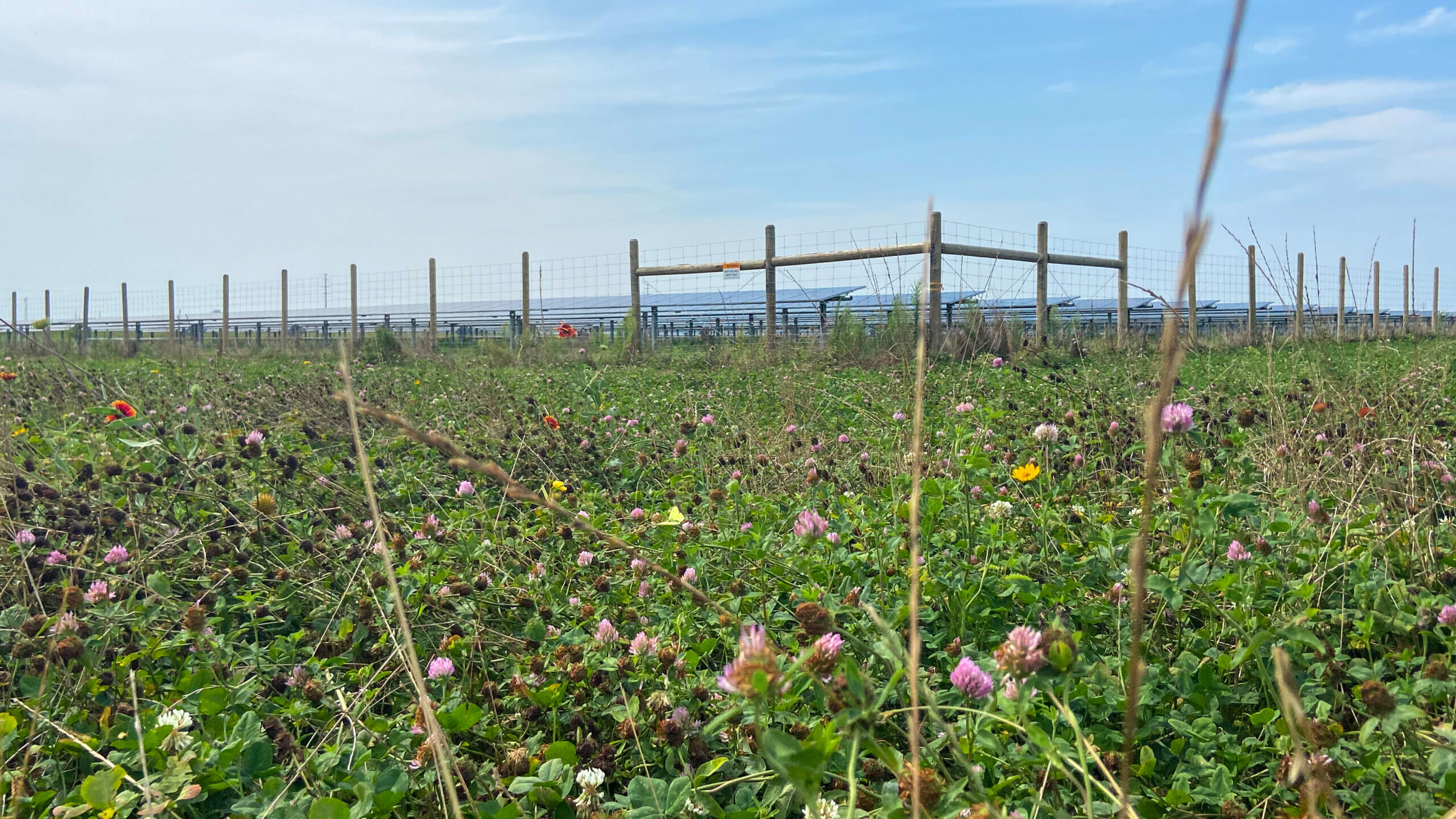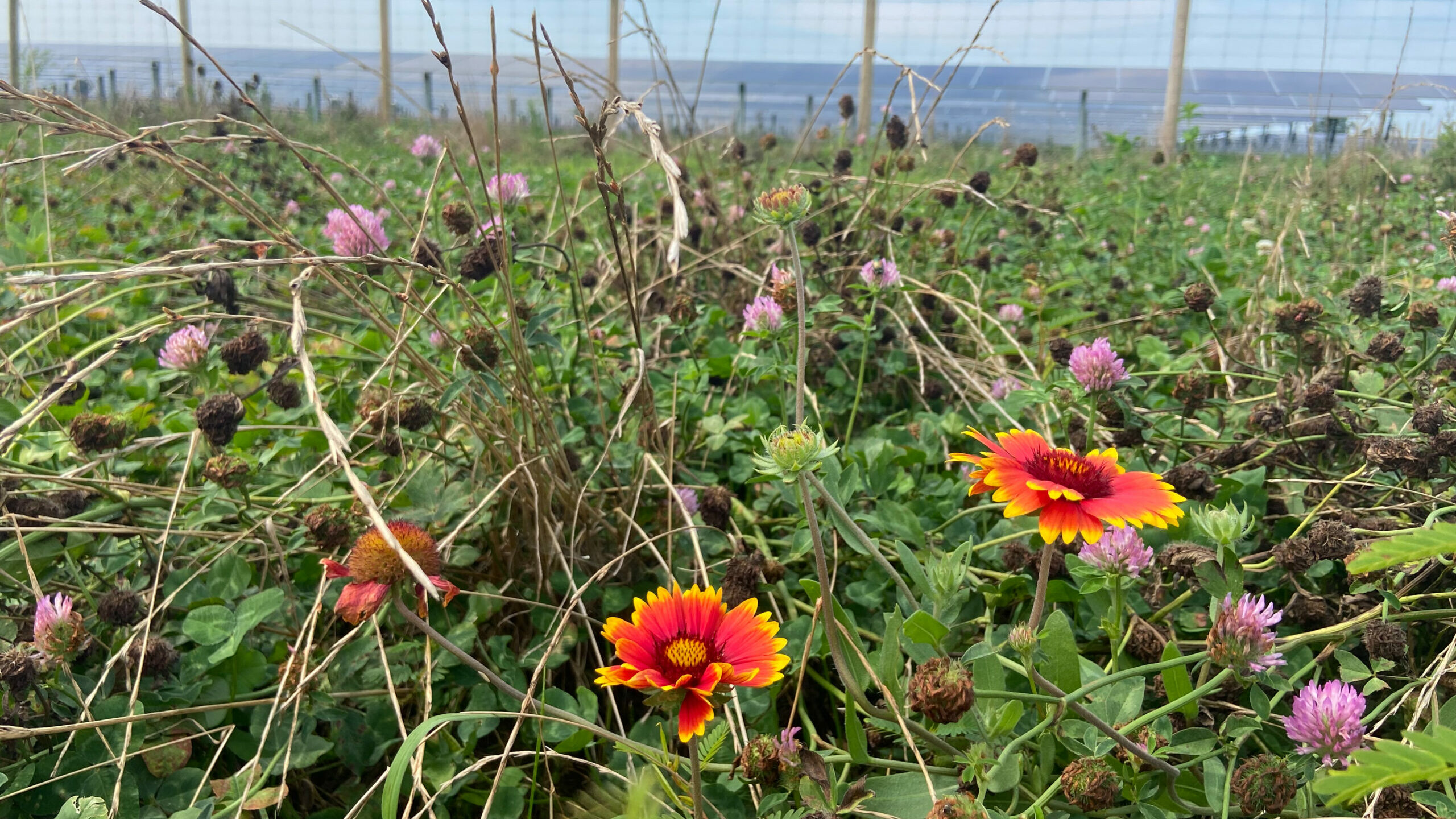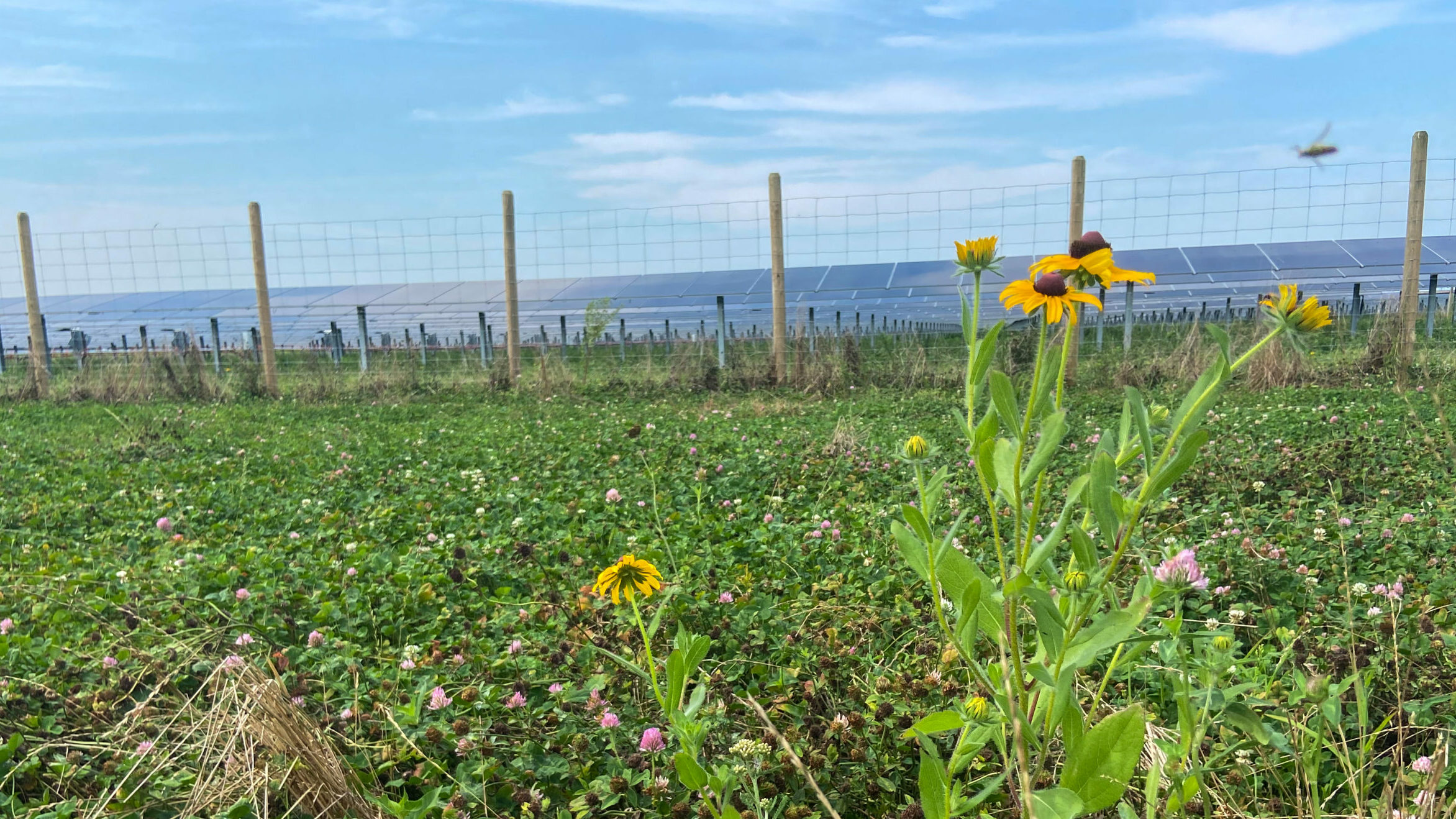Honeysuckle Solar hosts co-located pollinator habitat in partnership with the Bee & Butterfly Habitat Fund
Critical habitat is disappearing in the United States. As a result, bees, butterflies and other pollinators are in serious decline. That’s bad news for humans; these creatures are essential to life as we know it. One third of global food production is dependent on pollinator animals – honeybees and other insects pollinate most of the fruit and vegetable crops humans and livestock consume every day.
According to many experts, solar farms can play a meaningful role in keeping pollinator populations healthy and strong.
“Because of the size, the shape and scale of utility-scale solar, it has the opportunity to be one of the most impactful things for pollinator habitat on the landscape,” explains Pete Berthelsen, executive director of the Bee & Butterfly Habitat Fund.
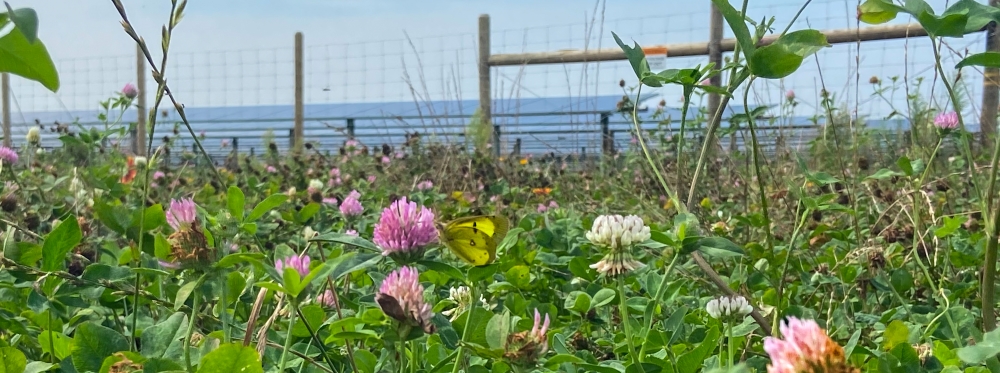
Solar panels are mounted on racking that sits several feet above ground, leaving plenty of space for vegetation to grow beneath. The posts that hold up the racking take up less than 10% of the land, leaving more than 90% of the land area available to provide a stable habitat for several decades over the solar farm’s long life.
Lightsource bp has been seizing this opportunity to establish and protect habitat at our solar farms for years, as part of our evidence-based biodiversity framework and Responsible Solar ethos. A carefully curated community of plants grows under and around our solar panels, providing a stable long-term home for pollinators and other wildlife.
The Bee & Butterfly Habitat Fund, whose mission is to increase and improve critical pollinator habitat to help honey bee and monarch butterfly populations thrive, has started a new program to help more solar developers incorporate pollinator habitat into projects around the United States. Lightsource bp’s 188MW Honeysuckle Solar project in St. Joseph County, Indiana will be one of the first participants.
Pollinator Habitat for Honeysuckle Solar
As one of the first “Solar Synergy” partners, Lightsource bp’s Honeysuckle Solar project features two distinct seed mixes. The combination will help distribute pollinator benefits across the entire site.
“The greater the diversity you have in there, the more pollinator species and the more benefits you’ll be able to impact,” Berthelsen explained.
The first mix, which is growing between and beneath the rows of solar panels across the entire project, contains 25 species of grasses and flowering plants. This mix exceeds the requirements of the Indiana Solar Site Pollinator Habitat Planning Scorecard produced and published by Purdue University, with more than 75% native species blooming from spring through fall.
This mix was designed to be grazing-friendly in order to support a flock of sheep managed by an Indiana livestock farming family. A father and son duo keep nearly 1,000 sheep at the solar farm to maintain vegetation through a paid grazing contract. This has allowed them to expand their sheep business with new land access, while earning steady new revenue through the contract.
The Bee & Butterfly Habitat Fund designed and provided the second mix, which is featured in a “high-density” pollinator meadow on more than 20 acres around the site perimeter. This mix contains more than 50 species (many of which are pictured in this article!)
As of September 2024, the pollinator field is thriving in its first season. While pollinator habitat can take years to fully establish, the plot at Honeysuckle is already sporting a strong showing of key native species. Late summer blooms like partridge pea, coneflower and Indian blanket stand out among a thick bed of clover.
And pollinator insects have certainly taken notice—there is an audible buzzing in the air, with countless native bees, butterflies and other insects spotted throughout the year.
About the Solar Synergy program
The Bee & Butterfly Habitat Fund announced their new “Solar Synergy” program in early 2023. The program provides tools and expertise to utility-scale solar developers seeking to cultivate high-quality pollinator habitats at their projects.

Some of the benefits of this program include:
- Providing seed mixtures designed to provide high-value food and shelter for pollinators, while meeting the solar industry’s unique needs as well
- Monitoring the health of pollinator populations at the solar farm during operations
- Documenting how on-site vegetation helps pull atmospheric carbon into the soil for long-term sequestration
- Connecting solar developers with opportunities for commercial honey production on-site
Executive Director Berthelsen stresses the importance of monitoring and documentation to generate data that measures the benefits of this program. The Bee & Butterfly Habitat will track how many pollinators are present at sites, what species they belong to, changes in soil health and other factors.

Berthelsen is also excited about solar-grown honey.
“A beekeeper’s ability to find high quality forage and pollinator habitat has become less and less,” he explains. “And that has affected honeybee health as well as the amount of honey produced.”
According to the United States Department of Agriculture, the United States imports more than 70% of the honey it consumes from foreign suppliers. Solar farms with pollinator habitat can help boost domestic production by providing a stable source of nectar for the bees, boosting domestic production.
In the future, Lightsource bp may pursue opportunities to host commercial beekeeping at the project site. Meanwhile, the Bee & Butterfly Habitat fund will begin monitoring the health of pollinator habitat and populations at the project site, as well as documenting carbon sequestration into the soil.
Lightsource bp is proud to be participating in this innovative new program. We hope it will help Honeysuckle Solar serve as a model for responsible solar development in the United States.


